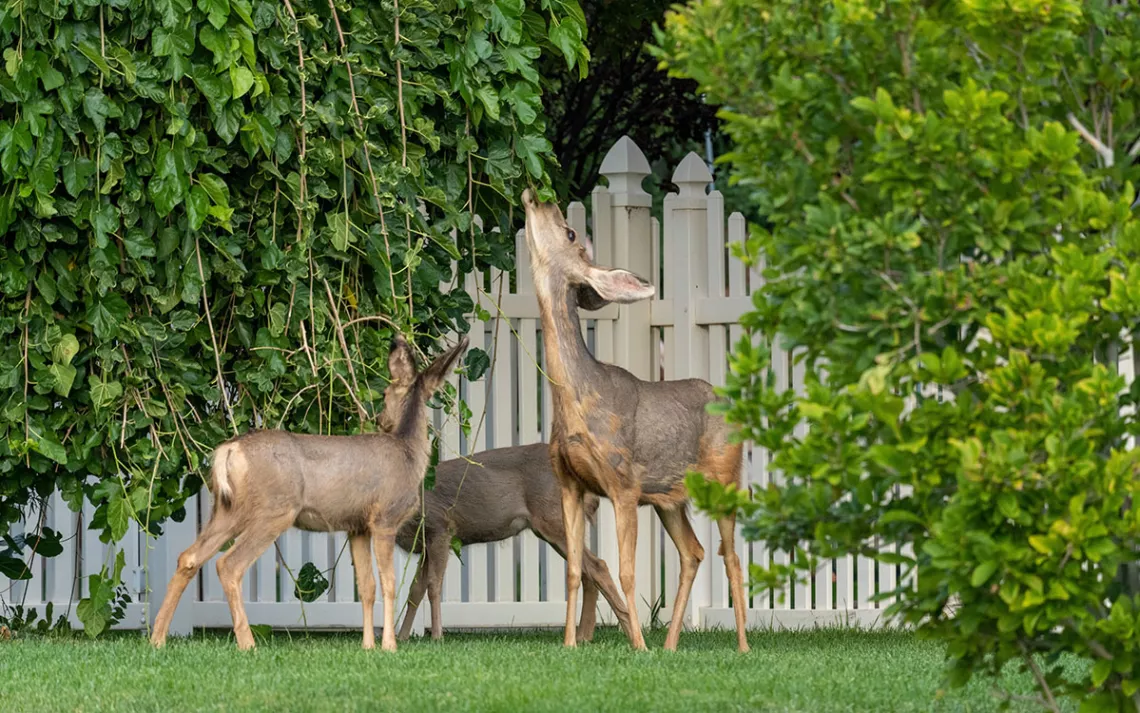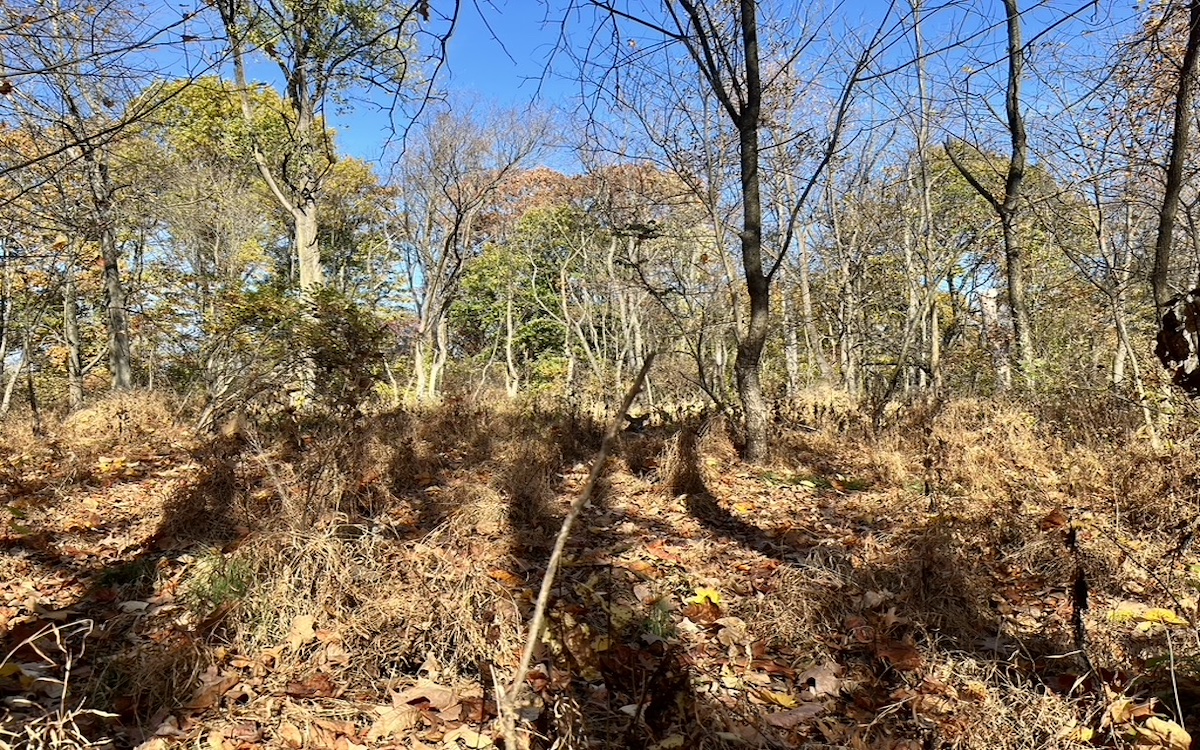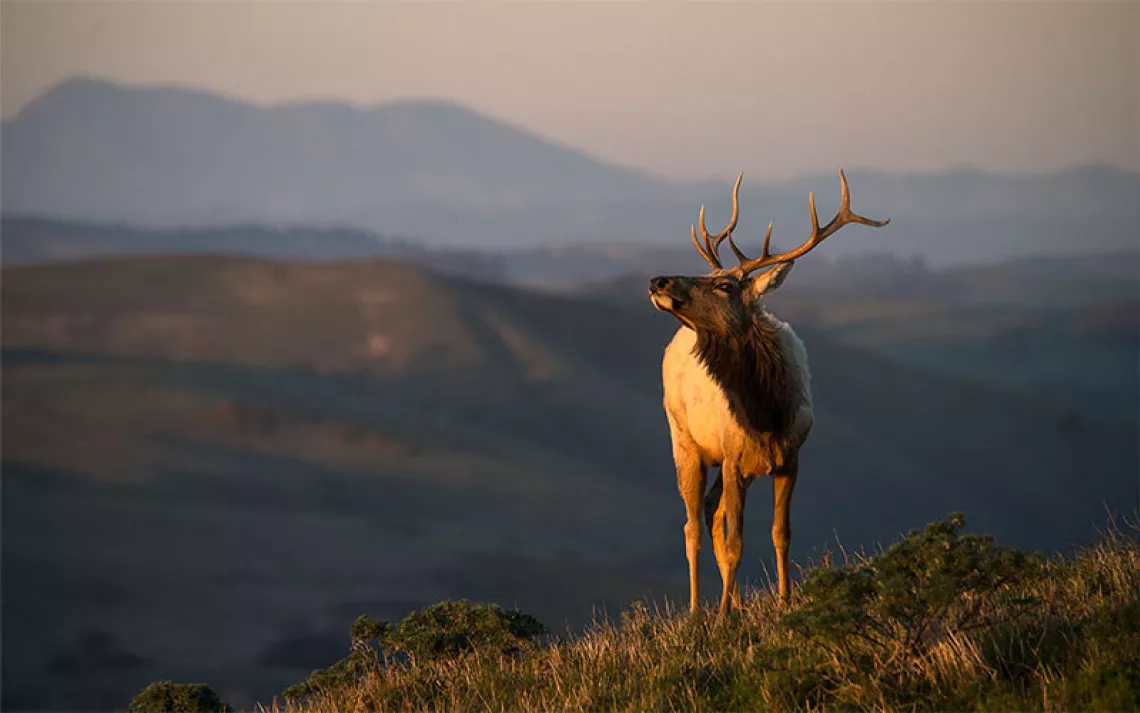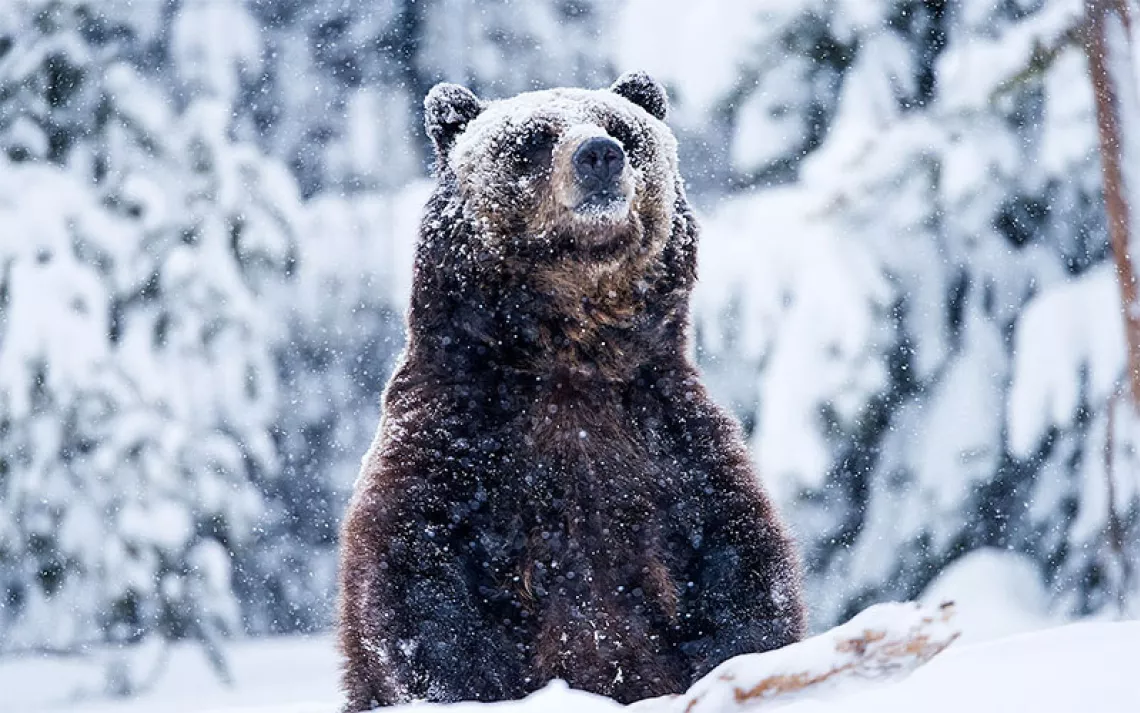Where Neighborhood Deer Are Decimating Local Ecosystems, Is It OK to Hunt Them?
Pittsburgh city officials are pursuing a controversial tactic of controlled hunts

Photo by Jon G. Fuller/VWPics via AP Images
Cem Akin was walking out of Pittsburgh’s Frick Park on a winter day in December when he came across two archers carrying the carcass of a doe they’d hunted. The sight was distressing enough to make a bystander call the police. But officers informed them that the hunt was not only condoned but was ordered by the city.
“All of a sudden, the beauty of our parks have been replaced by bloodshed and suffering as the gentle deer who are a natural part of every North American forest are now being killed using some of the cruelest means possible,” Akin wrote to me, describing the incident.
A historically unprecedented urban herd, freed of its natural predators like panthers and wolves, is forcing a citywide reckoning for what it means to share an urban ecosystem. Today, some researchers estimate population densities as high as 300 deer per square mile in the city’s wooded parks. The native plants and shrubbery that make up the foundation of those forests have been more or less decimated, and the many species of birds and insects that depend upon them are struggling.
The city government has responded with a controversial solution: A deer culling program, now in its second year, which brings a team of archers chosen by lottery into several city parks to hunt the herd down to lessen the population. In approving this program, the city council took inspiration from Cincinnati, which has pursued a similar strategy to bring local forests back from the brink. But the bow-hunting program has faced a two-pronged critique from ecologists and animal rights activists. The former makes the case that it’s not aggressive enough to actually heal the forests, and the latter—like Akin—decry its violence toward animals.
“The urban deer issue is a quagmire,” said Walter Carson, a retired ecologist at the University of Pittsburgh. For a program to be effective enough to make forests healthier, “you have to have people invested for a very long period of time, and you need to bring deer numbers down year after year, which means you have to kill them.” But when that killing happens in close proximity to homes and businesses, it elicits strong emotional reactions.
Since the pandemic drove people to rely more upon urban green spaces, city dwellers have developed a strange, fraught relationship with deer. The animals have lost most fear of humans as their ranks have grown. We’ve had to share closer space, which means seeing them more intimately than before. On Pittsburgh’s Nextdoor—a venue not necessarily known for its compassion—posts with dozens of comments have proliferated on how to care for a deer who has gotten her head trapped in a plastic bucket, or what to do about an abandoned fawn found hiding in a backyard. We’re recognizing the lives of our animal neighbors, and the challenges they face living alongside humans.
But they are fundamentally reshaping an ecosystem already stressed by climate change. In Pittsburgh’s unique Appalachian topography, deer are more than a nuisance that devour gardens and shred tree trunks—they’re slowly endangering people’s homes by eating away the native plants whose roots anchor the earth of the region’s steep hillsides. More intense rains are already driving those hillsides to slip and collapse down into the valleys, breaking off entire segments of roads, shifting the foundations of homes, and most recently depositing several tons of soil and rock onto the city’s busway.
“I honestly think, for our region, it is the number two environmental crisis behind climate change,” said Ryan Utz, an ecologist at Chatham University. “If you look on the ground, it's an ecological catastrophe because they're simply eating everything to oblivion except a small number of mostly invasive species.”
Utz explains that the deer have changed regional woods slowly but fundamentally, such that what we see surrounding us in the parks and ravines is an emaciated, unwell forest ecosystem. A healthy Appalachian forest is one with a full, vibrant understory, dense with wildflowers like wild ginger and trillium. Instead, forests are often overtaken by invasive species like barberry and Japanese knotweed.
For many people, a sick forest is not as dramatic a sight as a dead deer carcass, due to a phenomenon that ecologists call “plant blindness”—an inability to recognize what plants are struggling or absent altogether. “For somebody to go out into a Pittsburgh city park, they see green everywhere, they see trees, but they can't tell that there's a gigantic red flag, like a siren wailing, because they're not botanically educated,” Utz said. “Contrast that with an encounter with a deer, and everyone loves wildlife encounters, especially large wildlife. It just makes perfect sense why people don't see the crisis.”

Photo by Eve Andrews
The deer themselves, says city park ranger Erin Heide, are undernourished and starving too. Having eaten the native plants that make up their normal diet into local extinction, they scavenge for foods that aren’t normal for them. And in traveling farther and farther afield to feed themselves, they’ve lost their fear of humans and roadways.
Shannon Dickerson, with the animal rights organization Humane Action Pittsburgh, notes that the expansion of exurban development into wild deer habitat has displaced more of them toward urban forests. “When you're having a lot of space being taken away that used to be wild, it's gonna change up their patterns and where they're living,” she said.
Dickerson acknowledged that the overpopulation issue is significant and problematic, but she comes at it from “the perspective of caring about not senselessly killing animals who have done nothing to deserve it other than exist.” When she first heard the city council discussing the deer issue at a meeting in 2022, she began researching nonlethal solutions. She called Tony DeNicola, whose organization White Buffalo is a reigning authority on deer management in urban and suburban communities.
“If your objective is to deal with biodiversity impacts—and I will put every last nickel I own on the table—it will never happen with bow hunting in developed areas,” he said. A sustainable population for the return of native plants is about 20 or 30 deer per square mile—about 10 percent of the current density in Frick Park, for reference.
Archery is considered to be the more humane form of hunting, as it gives more of a “fair chance” for the deer to escape. But that also—obviously—limits its effectiveness. DeNicola gives an example: If there are six deer standing together, a sharpshooter can kill all of them with a quick succession of shots to the head. An archer can kill one deer with a shot, but in the time it takes to reload a bow for another, the remaining five will have run off. And deer are smart—they’ll quickly learn to avoid an area where they’ve seen one of their brethren die.
But it is our very closeness with deer—how they’ve made homes in private yards, vacant lots, and narrow stands of forest scattered throughout the city—sharpshooting becomes a less effective method, because you can’t exactly send hunters running through backyards with a rifle. The denser the community, DeNicola says, the more sterilization becomes a better option to reduce herds.
The most effective way to sterilize a doe—as opposed to birth control “vaccines,” which have to be administered over multiple courses and aren’t always effective—is to tranquilize her and surgically remove her ovaries. In the neighborhood of Clifton, in Cincinnati, civilian volunteers organized and raised tens of thousands of dollars to fund a team trained by White Buffalo that goes out regularly and performs in-field surgery on does, with a procedure that only takes a few minutes once the deer is sedated. Their efforts have brought down the local herd by about 40 percent since 2015.
And yet even those volunteers, so fervently motivated against hunting that they organized a comprehensive citizen veterinary brigade, questioned the ethics of operating on wild animals and removing their ability to reproduce without their consent.
In May 2024, the University of Pittsburgh’s Graduate School of Public and International Affairs published an analysis reiterating DeNicola’s position that sharpshooting would need to supplement the current bow-and-arrow method to meaningfully restore forest health. The analysis estimated that adding a sharpshooting program would cost about $900 per deer; sterilization, about $1,500. Dickerson makes the case that over time, as the number of does requiring sterilization diminishes, the programs end up with roughly equivalent costs.
“Even if you totally disagree with our position, it's important to acknowledge that what the city is currently doing is not going to work, and a lethal program that is going to work is going to cost just as much [as a sterilization program] in the long run,” she said.
Heide, the park ranger, says that horticulturists in Frick Park have already reported the return of some vegetation in Frick Park—in areas without fencing, caging, or other physical protection against deer—after just one year of the city’s management program. She told me this while taking me down a trail to see the difference between a fenced-off enclosure and the surrounding forest on an 80-degree day at the end of October. The brush and bushes behind the wire were crisp and brown from the unseasonable heat, but dense; there was nothing between the unprotected trees outside the fence but leaves on the ground and empty space.
A few feet away, we spotted a doe resting in a patch of shade. She stared in our direction, but she did not budge.
 The Magazine of The Sierra Club
The Magazine of The Sierra Club



